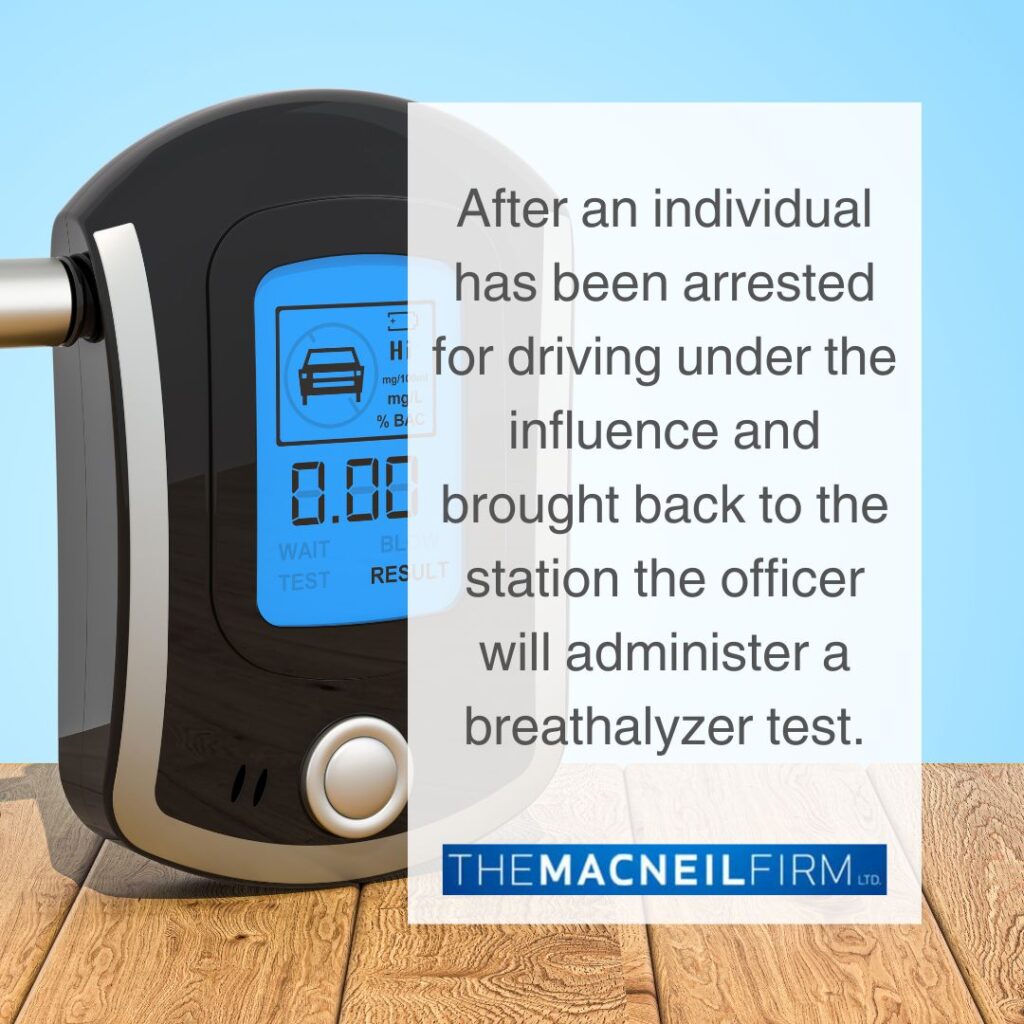When a law enforcement officer stops a vehicle for a traffic infraction, he or she may be looking for signs that the driver is under the influence of alcohol. A breathalyzer test is not the first thing they do. If they believe that the driver is a potential DUI suspect, he or she will likely ask the driver to submit to a field sobriety test. This is the first in a battery of possible tests used by law enforcement to determine whether to arrest and charge someone for driving under the influence.
After an individual has been arrested for driving under the influence and brought back to the station, the officer will administer a breathalyzer test or other chemical test. In addition, they will read what’s called the Implied Consent Warnings, also called the Warnings to Motorist. These warnings inform the person about the consequences of submitting to the breath test and being found over the limit, as well as the potential consequences of refusing to take the test.
The resulting suspension from either a test failure or test refusal is called the Statutory Summary Suspension. Generally, for a first offender, a breath test that’s over the limit would result in a 6-month driver’s license suspension. A refusal to take a breath test is generally a 12-month driver’s license suspension. The difference in length is to encourage people to take the test, because the result that’s over the legal limit will give the prosecution a stronger case.
How the breathalyzer test is administered
The evidentiary breathalyzer test is administered at the police department. Sometimes state or county police would administer a breath test at a tollbooth area that’s set up to process the DUI arrest, or at a close-by police station as well. The driver is admonished first with the Warnings to Motorists, which explain implied consent information and lay out the suspension periods for being over the limit or refusing to take the test. Then the officer would observe the individual for 20 minutes. By law, the officer must do this to make sure that the individual doesn’t eat, drink, burp, vomit, or put anything else in their mouth that could potentially invalidate the test.
If a person does burp, vomit, or regurgitate in some way, this would potentially cause the breathalyzer to give a higher reading because of the presence of mouth alcohol. The 20 minutes observation period is purported to be sufficient time for any mouth alcohol to dissipate. If, for example, somebody burped while in the middle of the observation period, the officer is required then to start the observation period over for another 20 minutes. This is also a great opportunity to impeach the officer on cross examination.
After the observation period, the officer pushes a few buttons on the breathalyzer, and the motorist is asked to blow in the tube continuously to make sure that a sufficient sample is given. After the sample is provided, if it was sufficient, then a breath ticket is printed out with the blood alcohol results on it. If the machine indicates that an insufficient breath sample was provided, the driver may be asked to try again. If the driver is unable to provide a sufficient sample, it is considered a refusal in the eyes of the law, even if there are legitimate reasons a sample could not be provided.
Most breathalyzer devices test for alcohol using infrared technology. After a person blows into the machine, the machine emits an infrared light energy through that breath based on the wave length. In other words, alcohol will affect the wave length of that infrared light. Based on that, a microprocessor converts that measurement to a blood alcohol content reading. Then the blood alcohol content number, which is produced, is actually measured in the amount of grams of alcohol per 210 liters of breath.
Accuracy of the test
How accurate and reliable the readings from the breathalyzer test are depends who you ask. Law enforcement and most judges might say that they are generally accurate. However, like any electronic device, they’re prone to malfunction and error, and they’re only as accurate as the person administering or operating the machine. If they are not operated properly, and if the test is not performed as required by law, then the test is invalid.
The machines must also be consistently maintained. The State Police must keep maintenance records for our review. Obviously machines that have not been repaired or maintained can malfunction. Many people would be surprised to learn just how primitive the actual technology is in a breathalyzer test. Oftentimes, our attorneys can evaluate whether the test was maintained and administered properly and use faulty tests as grounds for reduced charges or dismissal.
For experienced DUI attorneys, contact The MacNeil Firm
We have countless cases where we’ve caught police officers lying about the observation period, the field sobriety test, or how the test was administered. There are a number of events that they have to document, specifically the time that the arrest and observation period occurred. That’s a great way for our experienced attorneys to catch them in a lie if the time periods don’t add up, or if there was too little time between the time that the breath ticket indicates that was printed out versus some other event. This is just one strategy that can be uses to produce the best possible outcome for my clients.
For more information on evidential breathalyzer test In Illinois, a free initial consultation is your next best step. Get the information and legal answers you are seeking by calling (708) 218-0947 today.



